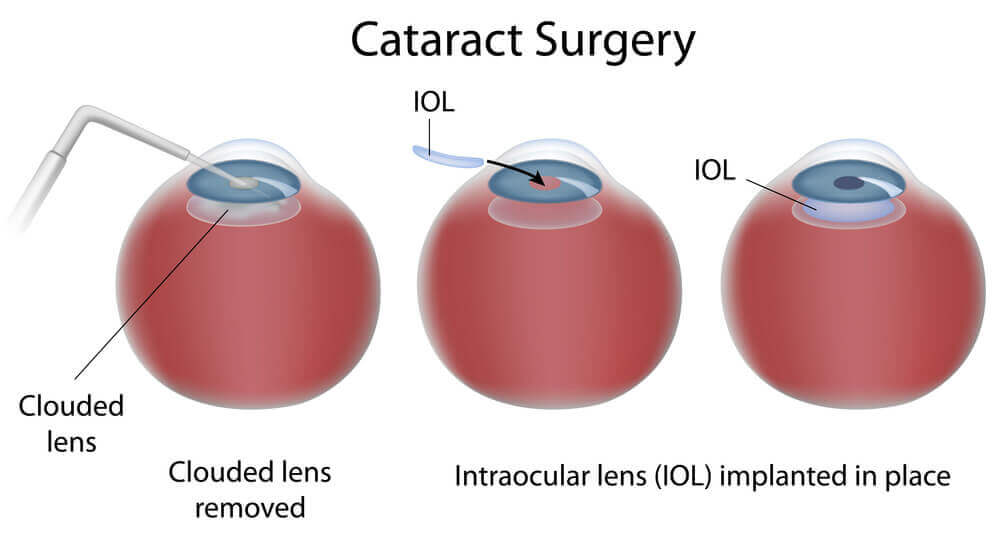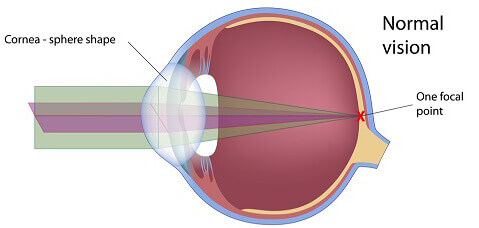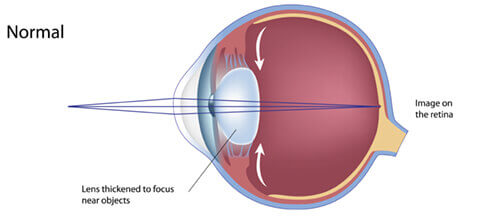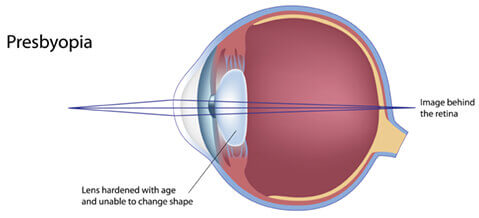
Usually, you can decide if, and at what stage to have the operation. The cataract may need no treatment at all if the vision is only a little blurry. A change in your eyeglass prescription may improve vision for a while. If visual impairment interferes with your ability to read, to work, or to do the things you enjoy, then you will probably want to consider surgery.
In the past, eye specialists often waited until the cataract became ‘ripe’ before suggesting you had it removed. Nowadays, with modern surgery, the operation can be carried out at any stage of the cataract’s development. In fact, removing the cataract at an earlier stage is a little safer to do before the cataract becomes ‘ripe’.
A majority of cataracts today are removed by Extracapsular surgery, in which the posterior capsule of the natural lens is left in place to support the IOL, which is implanted at the time of surgery. There are two types of extracapsular surgery.

The nucleus of the lens, which is too hard to simply remove by aspiration, is taken out in one piece; and the softer parts of the lens are then aspirated. The surgeon makes an incision (10-12 mm in size) where the cornea and sclera meet. Carefully entering the eye through the incision, the surgeon gently opens the front of the capsule and removes the hard center, or nucleus, of the lens. Using a microscopic instrument, the surgeon then suctions out the soft lens cortex, leaving the capsule in place.
It is a form of extracapsular surgery. In phacoemulsification, the hard nucleus is broken up by ultrasonic fragmentation (using sound waves) within the eye, and can then be aspirated. This allows a smaller incision (less than 3 mm in size) to be used.
The other way of removing a cataract is Intracapsular surgery, in which the whole lens is removed in a single piece without leaving the posterior capsule behind. The patients are rehabilitated with glasses or contact lenses. This form of surgery is being done in a few villages and camp surgeries in India.
Astigmatism is an eye condition with blurred vision as its main symptom. The front surface of the eye (cornea) of a person with astigmatism is not curved properly. The curve is irregular, usually one half is flatter than the other half, similar to the shape of a football. When light rays enter the eye, they do not focus correctly on the retina, resulting in a blurred image. Astigmatism may, though less common, also be caused by an irregularly shaped lens or cataract. In this case, once the cataract is removed, the astigmatism is also gone with it. Astigmatism can be treated with LenSx limbal relaxing incisions, which reshape the eye to make it rounder. It can also be treated with a Toric Lens Implant, LASIK, Glasses and Contact Lens.


When your eyes were young, your natural lens was both transparent and flexible. Because of this, your vision was most likely stable until you reached your forties. Around that time, you may have noticed that you had to hold a menu or a book further and further away to read it. Many people end up wearing a pair of reading glasses or bifocals to compensate for this aging of the eye. This condition is called “presbyopia” and eventually affects everyone, including those who are nearsighted, farsighted, have cataracts, or had perfect vision most of their life.
RestorAt the end of a cataract operation, the surgeon inserts an intraocular lens implant in place of the original cataract to help the eye focus, typically for far vision with the near vision out of focus without glasses. This lens is a monofocal lens, which only focuses at one distance. So patients must wear glasses for reading and near tasks. Patients have the option to correct for both far and near vision with a special type of lens called presbyopic lens. There are a few variations of these lenses including, ReSTOR, ReZOOM, Tecnis multifocal, and Crystalens. Among these lenses, Dr. Lee prefers and has the most experience with ReSTOR since its approval by the FDA in March of 2005. There have been multiple ongoing design improvements ever since.

